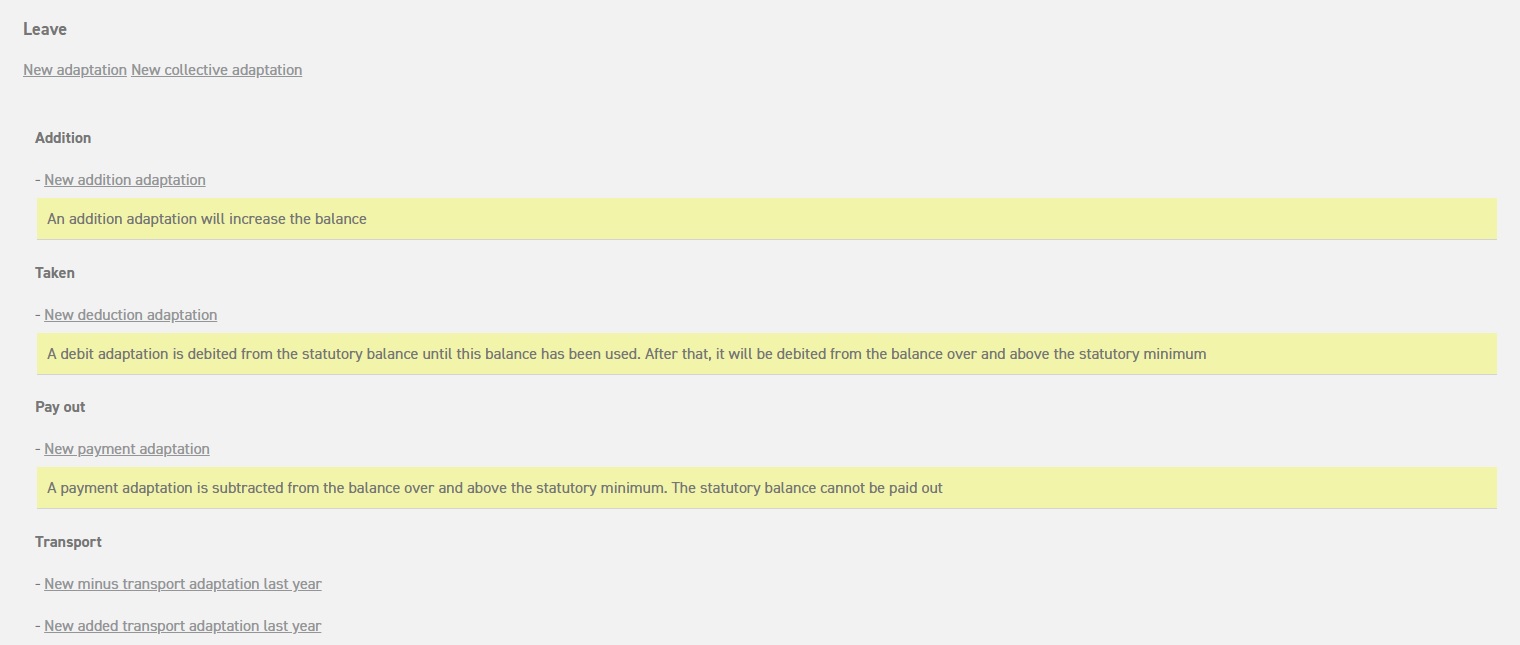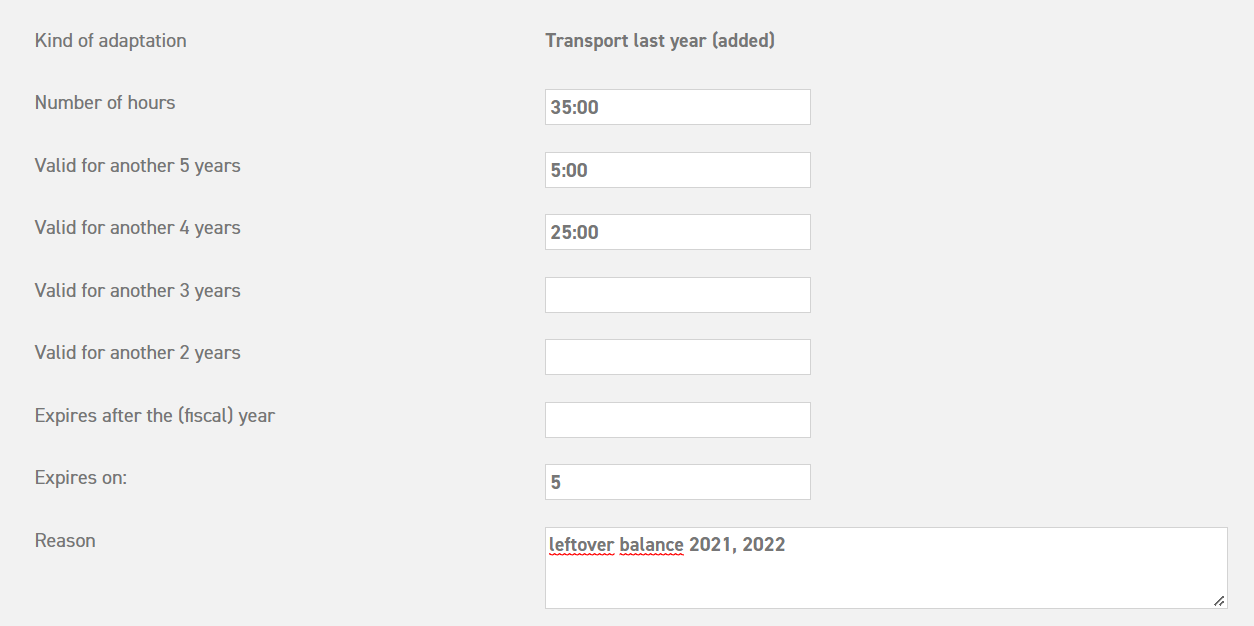Types of adaptations
Four types of adaptations are available:
– Administrative adaptation
This involves manual addition to or subtraction from the balance. The reason will be shown in the last column.
– Leave entitlement
This is the balance given at the beginning of the year from the employment, or when a contractual change has occurred.
– Carry over balance
This involves transfer of positive or negative left-over balance of the previous year.
– Expired transport adaptation:
This can only occur when the 2012 legislation on leave is selected as the calculation method. A deduction adaptation will be made because the leave has expired.

Perform adaptation on balance/transfer left-over balance of the previous year.
There are many reasons for performing an adaptation on the balance, such as paying leave days to you employees, issuing rewards for not being ill all year, or making a correction.
Two types of adaptations can be used: individual and collective adaptations.
An individual adaptation is performed as follows:
Go to ‘Leavedays (module at the top)’ ⇒ ‘Overview’ ⇒ ‘Employee balances’, and select the employee whose balance needs to be changed. Then, click the type of leave of which the balance has to be changed. In the top left corner, select ‘new adaptation’
Then, select the type of adaptation needed.
Addition adaptation
The balance added here can be found in the annual leave summary. It can be found under ‘manual additions’. This balance will always remain exceeding statutory.
Taken adaptation
The taken balance will be shown in ‘taken leave’. This option is used for deducting balance which has to be taken from the statutory balance first, and when that runs out, from the exceeding statutory balance.
Payment adaptation
With this function, you can pay out your employee’s leave days. It is not possible to pay more than the amount of exceeding statutory leave, unless the employee’s employment has been ended.
Minus transport adaptation last year
This should only be used when you are using the Leavedays system for the first time, or when an employee enters employment and takes leave days with him/her. Fill in the number of hours or days, and add a reason. Then, click save to perform the adaptation.
Added transport adaptation previous year
Again, the positive transport of last year is only used when initializing the system, or when an employee enters employment and takes leave days with him/her. At ‘number of hours’, fill in the total number of hours to be entered. Then, it is possible to divide the hours over the different spaces in which the hours can be filled in. These spaces coincide with the year balance summary.
Example
In this example, an employee has 35 hours left, of which:
- 5 hours are statutory leave from 2022 (which expire after 1,5 years, and thus will expire in 2023)
- 5 hours exceeding statutory leave from 2022
- 25 hours from 2021
All of these have different expiration dates.
The statutory hours from 2022 have to expire on the first of July of the year in which the adaptation is processed.
The exceeding statutory hours from 2022 will be valid for 5 years in 2023
The remaining hours of 2021 will be valid for 4 years in 2023.
This example will be filled in according to the screenshot below:
A number of hours, enter the total amount of hours to be added, regardless of the expiration date. The system uses this to check whether the individual amounts add up to the total amount filled in at number of hours.
Then, divide the 35 hours over the different expiration dates.
Meaning: from the 35 hours total, 5 hours will be valid for another 5 years, 25 hours will be valid for another 4 years, and 5 hours will expire this year (fill this in at ‘expires on’).
In the space next to 3 years, you can calculate the balance left over from 2020, in the space next to 2 years, you can fill in the left over balance from 2019, and expires after fiscal year, you can fill in the left over balance of 2018.
In the space next to reason, add a reason for this addition, so that the employee knows why this adaptation has been performed. Save the adaptation and the balance will be divided over the different types of acquired balance.


